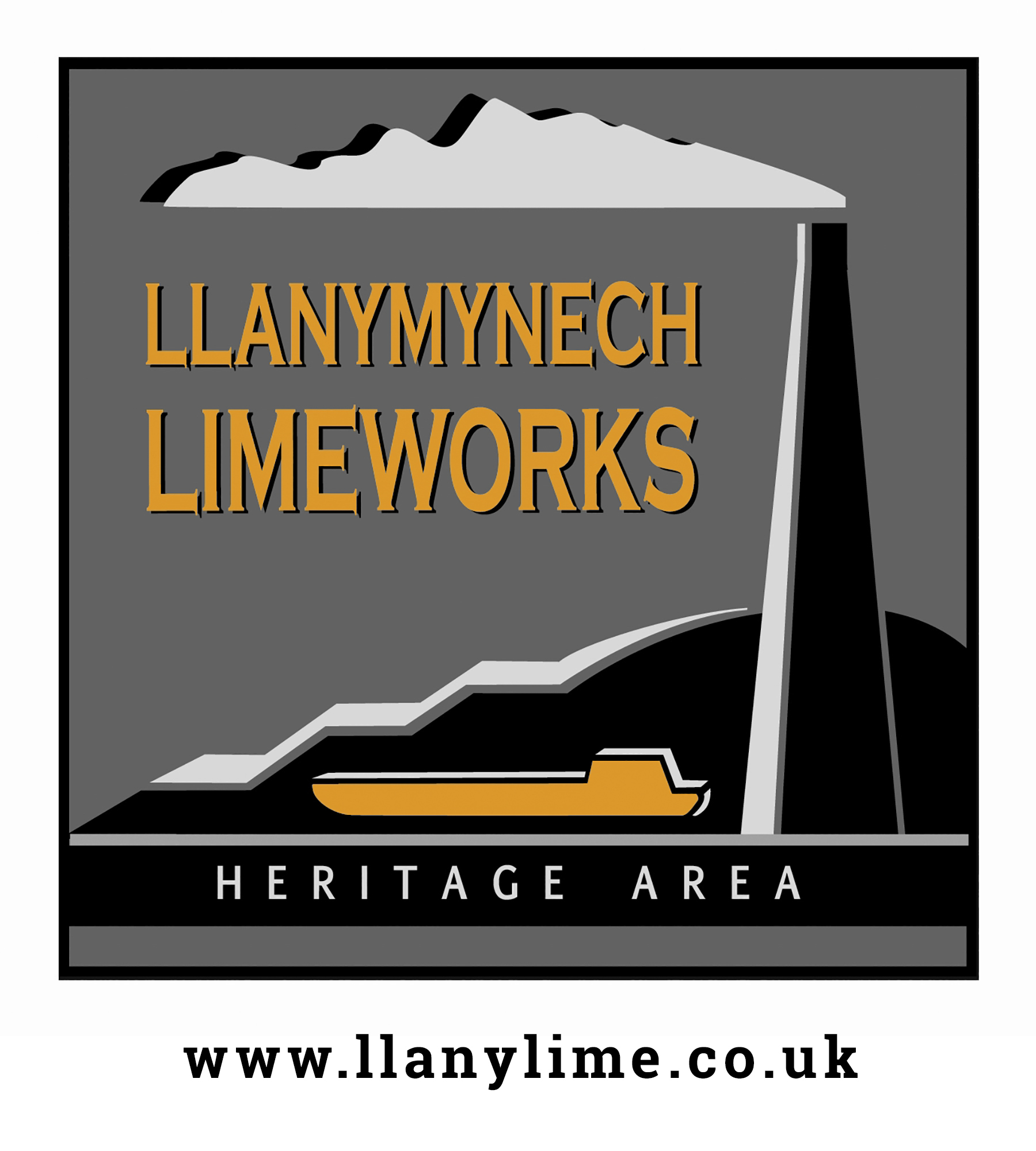
A Heritage Area and Local Nature Reserve

A Heritage Area and Local Nature Reserve
Tramway Survey - Introduction
By Tony Beardsell and Martyn Young
Some years ago (1993) when doing a sugar beet aerial survey in Shropshire, we took a look down on the chimney and kiln at Llanymynech and faint tramway tracks could be seen in a field.
Several years later, retired and involved in the industrial archaeology of the area with Martyn Young, we initially checked the accuracy of the 1888 survey maps, this became infectious, as very little information was available and we started to record our finds.
Local History and Observations
In the 17th century till 1790 all tramway and railway track was made of wood. From 1820 wrought iron, (later steel) was used, this leaves a gap or transitional period when cast iron was in use during 1780’s – 1825. The Rainhill steam trials (Rocket and all that) took place in 1829, so this is very early period.
The canal arrived at Llanymynech in 1795 which fits this transitional period, and several types of cast iron plateway, Birkinshaw fish belly rail and chairs have been found on the hillside.
At Pant in 2000 I watched a digger put in a new water pipe to the chapel along the old tramway track and he pulled up several sections of broken inverted T rail, this was a great clue. These were made in 4ft lengths, and mounted on stone blocks, most of the ones we have found have the ends sheared off, about 10 to 12 inches from the ends. The stone blocks and inverted T rail are now on display in the stable block.
In 1790, John Curr of Sheffield produced rails for extensive use in Shropshire, and William Hazeldine local iron founder also produced inverted T rail, fishbelly rail and plateway. He had a foundry at Shrewsbury and was involved with the canal here and at Froncysyllte and may have brought in second hand rail from other sites.
The first rail tramway was proposed by Yates in 1806, and manufactured by Davis & Co for the Middleton family to bring burnt lime, rock down from the quarry to the canal through field 380 (see Figure 3). In field 380, which is on private land outside the heritage site we have found several complete chairs, wedges and sections of inverted T rail just under the surface, on the line of the track bed as seen from aerial photography I took in the 90’s and confirmed on the 1863 maps. This is remarkable when you consider all the possible ground disturbances that have taken place.
We have found a large number of track spikes, both tramway and main line, springs, nuts, bolts, washers, base plates, fish plates, rods and trackbars all left just under the ivy and easy to trip over.
Quiet amazing really as the scrap men must have cleared the site and hundreds of children must have played there over the years.
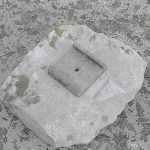
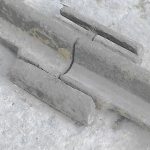
Chair in its stone block
Rails set into the Chair
Survey Areas
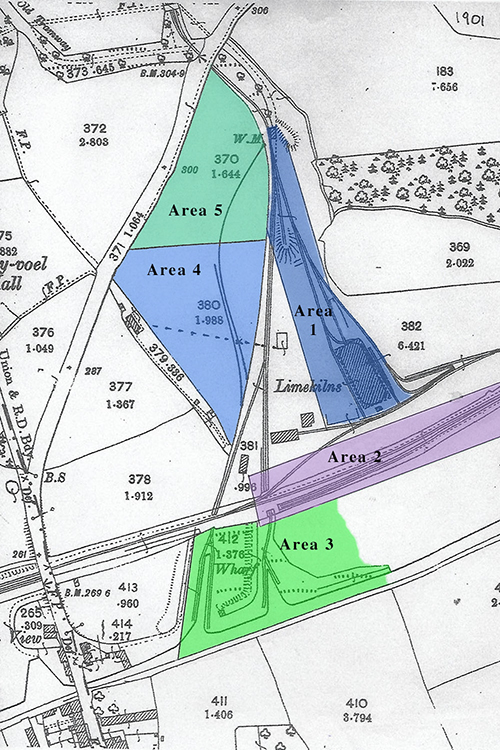
1901 Map showing the areas surveyed
All tramways and main line track bed in the Heritage Area have been walked since 2009 and a metal detector has been used to establish what lay under the ivy.
The 1901 map has been used as a reference for the surveys and has been divided into 5 areas as follows:
Area 1:
North and South tramways and main line from WM (the weighing machine or “tally” house) to the Cupola, Savin & Hoffmann kilns.
Area 2:
East to West, Main line right through the site including, the kiln loop, main line sidings, parallel level tramway, and inclined tramway used for loading and unloading main line trucks. Plus, turnouts and signal points at the eastern end of the field near the canal.
Area 3:
Tramway track servicing the docks area and tally house on British Waterway land (now Canals & Rivers Trust).
Area 4:
Field 380 Rock Cottage tramway.
Area 5:
Field 370 The Gables tramway.
Areas 4 & 5
In areas 4 & 5 we have a mystery in that every piece of the plateway has been different in section.
We have a list of local suspects:
- William Hazeldine, local iron founder.
- John Curr, Sheffield iron founder, many plateways in Shropshire.
- Turner Bros, Newtown, iron founders and quarry equipment.
- J & M Morris, Welshpool, iron founders.
- Bersham ironworks.
- Oswestry ironworks.
- Davis Bros, Wrexham, wrought iron masters, Middleton family, Chirk.
Recording Methods
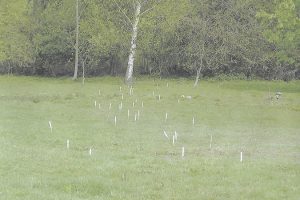
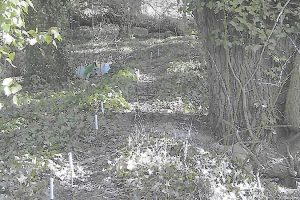
Field 380 Returns
Tramway Returns
Marking out metal detector returns
The photo (right), shows the horizontal tramway track parallel with the main line in area 2. It shows regular spacing of spikes just hidden under the ivy, compare this with the returns in field 380 Rock cottage tramway (photo left). Long tapes, range rods, etc were used to establish a straight line along the track bed to measure off and record the returns.